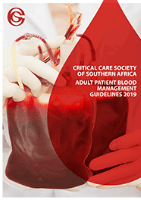
Southern African Journal of Critical Care
Scope & Guideline
Elevating standards in critical care through shared knowledge.
Introduction
Aims and Scopes
- Clinical Research in Critical Care:
The journal publishes studies that investigate clinical practices, treatment outcomes, and care protocols in intensive care units (ICUs), providing valuable insights into how to improve patient management. - Nursing and Interprofessional Education:
A significant focus is placed on the roles of nursing and interprofessional collaboration in critical care, emphasizing the importance of education, training, and communication among healthcare teams. - Public Health and Policy Implications:
The journal also explores the broader implications of critical care practices on public health, including the impact of healthcare policies, resource allocation, and educational programs in resource-limited settings. - Innovative Technologies and Methodologies:
Research on the application of new technologies and methodologies in critical care, such as telemedicine, advanced monitoring systems, and the use of artificial intelligence, is highlighted to promote innovation in patient care. - Patient and Family-Centered Care:
The journal emphasizes the importance of involving patients and their families in care decisions, aiming to enhance the overall experience and outcomes for critically ill patients.
Trending and Emerging
- Impact of COVID-19 on Critical Care:
Research addressing the effects of the COVID-19 pandemic on ICU practices and patient outcomes has surged, highlighting the need for adaptations in care protocols and resource management in response to global health crises. - Mental Health and Wellbeing of Healthcare Professionals:
There is an increasing focus on the mental health and wellbeing of critical care staff, driven by recognition of the stresses associated with working in high-pressure environments, particularly in the context of the pandemic. - Patient-Centered Outcomes and Experiences:
Emerging studies emphasize the importance of patient-centered care, exploring patients' perceptions of ICU experiences and the role of families in care decisions, thereby aligning practices with contemporary healthcare values. - Nutritional Support in Critical Care:
The relevance of nutrition support practices in the ICU setting is gaining attention, reflecting a growing understanding of the critical role nutrition plays in patient recovery and outcomes. - Use of Advanced Monitoring Technologies:
Research into the application of advanced monitoring technologies and their impact on patient management and outcomes is on the rise, indicating a trend towards more sophisticated and data-driven approaches in critical care.
Declining or Waning
- Traditional Diagnostic Techniques:
There seems to be a decrease in research centered around traditional diagnostic methods as newer technologies and approaches gain prominence, reflecting a shift towards innovation and efficiency in critical care diagnostics. - Basic Clinical Skills Training:
Papers focused solely on basic clinical skills training for healthcare professionals are less frequent, indicating a possible shift towards more advanced training and educational interventions that prioritize critical thinking and evidence-based practices. - Generalized Critical Care Protocols:
Research on generalized protocols for critical care management appears to be declining, with an increasing focus on tailored, individualized approaches that consider patient-specific factors and local contexts.
Similar Journals

Netherlands Journal of Critical Care
Transforming Patient Outcomes through ResearchThe Netherlands Journal of Critical Care, an esteemed publication of the NETHERLANDS SOC INTENSIVE CARE, serves as a vital resource for those in the fields of critical care and intensive medicine. As a platform focused on disseminating high-quality research from 2008 to 2023, this journal provides critical insights and advancements pertinent to the rapidly evolving landscape of intensive care practices. Though categorized in the fourth quartile for Critical Care and Intensive Care Medicine in 2023, its commitment to enhancing patient outcomes remains unwavering. With an ISSN of 1569-3511, this journal invites submissions that push the boundaries of knowledge and offer innovative approaches to critical care challenges. Thus, it is an essential reference for researchers, healthcare professionals, and students eager to stay at the forefront of critical care developments in the Netherlands and beyond.
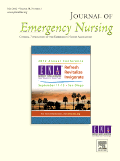
Journal of Emergency Nursing
Fostering Knowledge for Superior Patient OutcomesJournal of Emergency Nursing, published by Elsevier Science Inc, serves as a premier platform for advancing the field of emergency nursing. Since its inception in 1975, this peer-reviewed journal has established itself as a vital resource for researchers, practitioners, and educators alike, with a notable impact factor and current ranking of #8 out of 32 in the Emergency Nursing category, placing it in the 76th percentile. The journal's commitment to the dissemination of high-quality evidence, innovative practices, and essential insights makes it an indispensable tool for those seeking to excel in acute care settings. Although not open access, the Journal of Emergency Nursing is dedicated to fostering knowledge and improving patient outcomes through robust research and comprehensive reviews, aligning closely with its mission to enhance emergency nursing practices and education through every issue until 2024 and beyond. For professionals and students keen on staying at the forefront of emergency care advancements, this journal provides a wealth of knowledge and resources, reflecting the critical issues and developments shaping the future of healthcare.
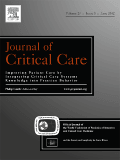
JOURNAL OF CRITICAL CARE
Leading the Charge in Critical Care InnovationJOURNAL OF CRITICAL CARE, published by W B SAUNDERS CO-ELSEVIER INC, is a prestigious peer-reviewed journal in the field of critical care and intensive care medicine. With an impressive Q1 classification in 2023, it stands as a leading publication among its peers, ranking #12 out of 110 in the Scopus database, which places it in the 89th percentile of critical care-related journals. Established in 1986 and with a converged timeline extending to 2025, the journal serves as a critical resource for international researchers, healthcare professionals, and students dedicated to advancing practices and understanding within the realm of critical care. Although it does not offer Open Access, the journal provides high-quality, rigorously reviewed articles that address contemporary issues, innovative techniques, and groundbreaking research in critical care medicine. By fostering scholarly dialogue and disseminating new knowledge, the JOURNAL OF CRITICAL CARE is pivotal in shaping the future of intensive patient care and enhancing health outcomes.
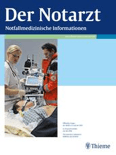
Notarzt
Advancing critical care knowledge for a healthier tomorrow.Notarzt is a well-regarded academic journal published by GEORG THIEME VERLAG KG, focusing on critical care, intensive care medicine, and emergency medicine. With an ISSN of 0177-2309 and an E-ISSN of 1438-8693, this German-based journal has been contributing to the medical field since its inception in 1985. Despite being categorized in the Q4 quartile for both Critical Care and Intensive Care Medicine and Emergency Medicine, Notarzt continues to provide a platform for innovative research, case studies, and developments that inform practitioners and researchers alike. With a publication history spanning significant years such as 1993 and 1999 to 2024, Notarzt is dedicated to improving outcomes in emergency and critical care settings through the dissemination of pivotal findings and comprehensive reviews. Although currently not an Open Access journal, it remains an essential resource for professionals striving to stay abreast of developments in their field.
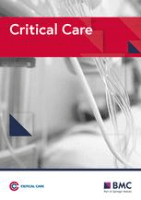
CRITICAL CARE
Elevating standards in critical care practice.CRITICAL CARE is an esteemed peer-reviewed journal dedicated to advancing the field of critical care and intensive medicine, published by BMC. Since its inception in 1998, it has been a prominent open-access platform that allows for the dissemination of high-quality research, fostering collaboration among researchers, healthcare professionals, and students globally. With a notable impact factor and ranking in the top quartile (Q1) of critical care and intensive care medicine, CRITICAL CARE occupies a vital role in disseminating cutting-edge findings and innovative practices that can significantly enhance patient outcomes in critical care settings. The journal not only encourages submissions of original research, clinical trials, and reviews but also emphasizes the importance of interdisciplinary approaches to critical care management. Positioned in the United Kingdom, CRITICAL CARE's commitment to open access ensures that its valuable content is readily available to a worldwide audience, reflecting its mission to bridge knowledge gaps and empower professionals in the pursuit of excellence in critical healthcare.
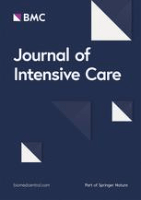
Journal of Intensive Care
Fostering Collaboration in the Heart of Critical CareThe Journal of Intensive Care, published by BMC, is a leading open access journal dedicated to advancing research and knowledge in the fields of critical care and intensive care medicine. With an impressive 2023 rank of #11 out of 110 in its category and placing in the 90th percentile, this journal offers a vital platform for researchers, clinicians, and healthcare professionals to disseminate innovative findings and best practices. Launched in 2013, the journal has gained significant recognition, achieving a Q1 quartile ranking in critical care, reflecting its commitment to high-quality contributions that address pressing issues in patient management and care. Additionally, as an open access publication, the journal ensures that its content is widely accessible, fostering collaboration and knowledge sharing within the global medical community. For those engaged in intensive care, the Journal of Intensive Care is an essential resource for staying abreast of the latest research trends and clinical advancements.
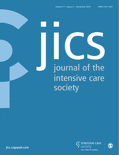
Journal of the Intensive Care Society
Inspiring Excellence in Patient CareThe Journal of the Intensive Care Society, published by SAGE Publications Ltd, serves as a premier platform for disseminating cutting-edge research and advancements in the field of critical care and intensive care medicine. With its ISSN of 1751-1437, this influential journal holds a distinguished position, currently ranked in the Q2 category for Critical Care and Intensive Care Medicine and Q1 in Critical Care Nursing, showcasing its significant impact within the academic community. The journal caters to a diverse audience including researchers, healthcare professionals, and students, by providing insightful articles that inform best practices and enhance patient care in intensive settings. It boasts impressive Scopus ranks, listed as 4th out of 27 in Critical Care Nursing and 32nd out of 110 in the broader category of Critical Care Medicine, reflecting its commitment to excellence. With content available from 2010 through to 2024, the Journal of the Intensive Care Society is essential for those looking to stay at the forefront of critical care innovation and research.
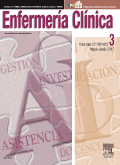
Enfermeria Clinica
Connecting theory and practice for superior nursing outcomes.Enfermeria Clinica is a distinguished journal published by Elsevier España SLU, dedicated to advancing the field of nursing through robust scholarly research and clinical practice. With an ISSN of 1130-8621 and E-ISSN of 1579-2013, this esteemed journal serves as a vital resource for nurses, healthcare professionals, and researchers. Operating from Spain, it has established a reputation for excellence, notably achieving Q3 ranking in the categories of Fundamentals and Skills, Nursing (miscellaneous), and Research and Theory in 2023, indicating a solid influence within the academic community. The journal is devoted to disseminating innovative research that informs nursing practices and improves patient care. Although it operates on a subscription basis, the insights and findings published in Enfermeria Clinica are invaluable for those looking to enhance their knowledge in nursing evidenced-based practice. The journal’s commitment to bridging research with real-world application makes it an essential tool for both emerging and established professionals in the nursing field.
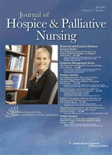
Journal of Hospice & Palliative Nursing
Elevating Standards in Hospice Nursing.The Journal of Hospice & Palliative Nursing (ISSN: 1522-2179, E-ISSN: 1539-0705), published by Lippincott Williams & Wilkins, stands as a leading resource in the field of hospice and palliative care nursing. With an impressive impact factor and ranked in the Q1 quartile for Advanced and Specialized Nursing and Q2 quartile for Community and Home Care as of 2023, this journal serves as a critical platform for disseminating evidence-based practices and innovative research. It covers a broad spectrum of topics, aiming to improve patient experiences and enhance the quality of care for individuals with life-limiting conditions. Created to support healthcare professionals, researchers, and students in the United States and beyond, the journal invites contributions that stimulate scholarly dialogue and advance the practice of palliative nursing. With publication years converging from 1999 to 2024, it remains an invaluable asset to the nursing community, fostering advancements in this vital area of healthcare.
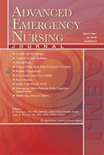
Advanced Emergency Nursing Journal
Shaping the Future of Emergency Medicine TogetherAdvanced Emergency Nursing Journal, published by Lippincott Williams & Wilkins, stands as a key resource within the domains of Emergency Medicine and Emergency Nursing. With a commitment to advancing the field, this journal provides a platform for rigorous research, critical reviews, and innovative practices aimed at enhancing patient care in emergency settings. Though it holds a Q3 ranking in both related categories as per the 2023 metrics, its global reach spans various aspects of emergency care, promising insights that are crucial for both professionals and academics alike. Covering topics from clinical procedures to policy analysis, the journal invites submissions that aim to bridge theory and practice, highlighting the importance of evidence-based approaches in emergency nursing. Researchers, educators, and healthcare practitioners can Find more information and explore their own contributions in a dynamic environment that continuously evolves with the field. Whether you're seeking to stay current with the latest advancements or to publish your findings, this journal is an essential asset for those dedicated to improving care in urgent medical situations.